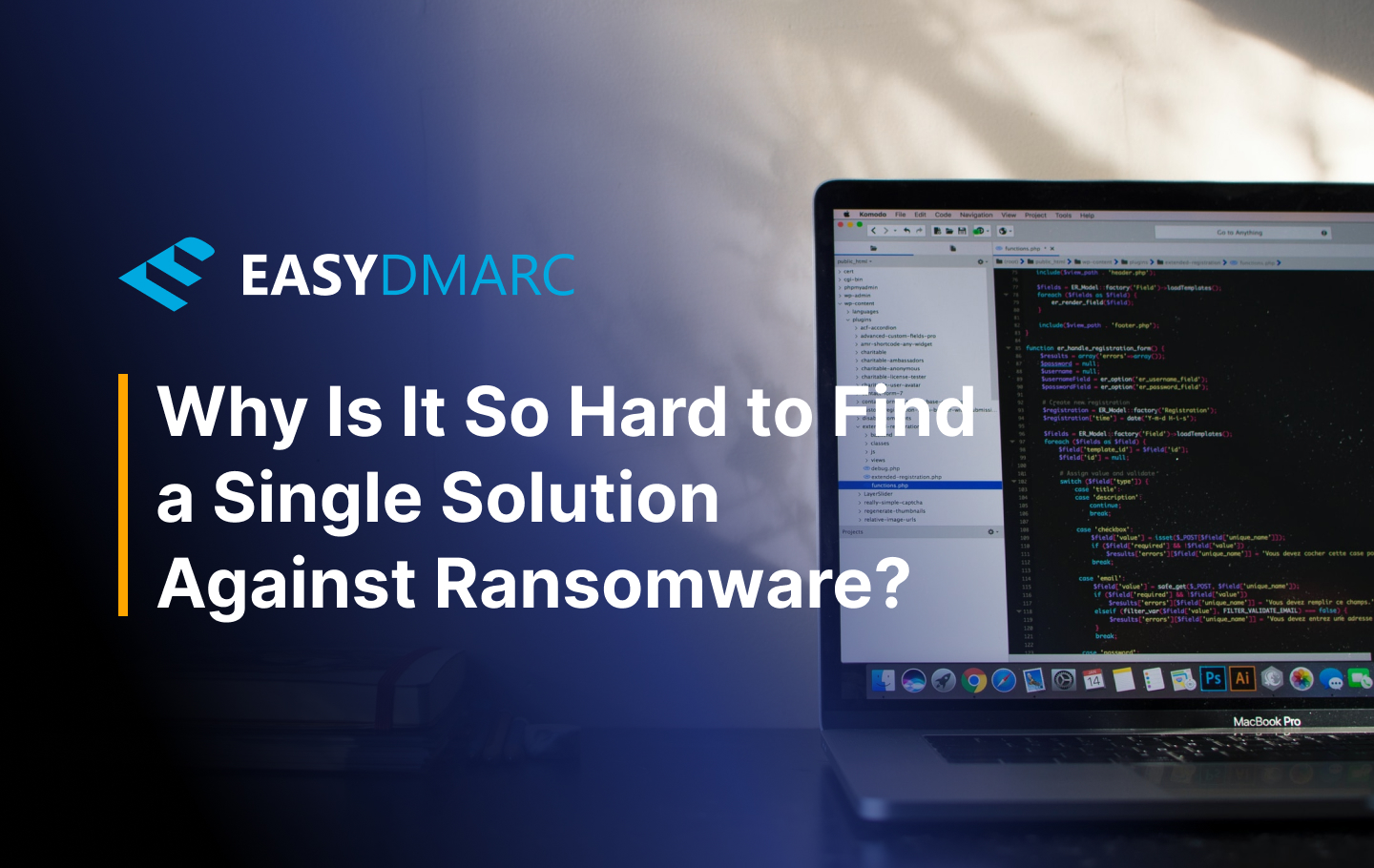When it comes to cyberattacks, ransomware is one of the most dangerous threats to businesses in all sectors. The ransomware attacker encrypts crucial files with malware and then forces you to pay ransom. Knowing how to protect against ransomware is crucial, but there’s “no one size fits all” solution.
Ransomware is an evolving threat—attackers are always searching for more advanced ways to carry out their plans. Cybercriminals utilize various attack vectors to distribute malware infections. That’s why it’s so hard for organizations to find single protection against ransomware attacks.
Ransomware can lock, destroy, and corrupt your files, making these attacks even more dangerous. You should never trust ransomware attackers as they might refuse to restore access even after you’ve paid the ransom.
It’s imperative that organizations implement a good ransomware attack solution to mitigate these risks. The best way to protect against ransomware attacks is to prevent them from happening in the first place.
This article dives into the reasons why the best way to protect against ransomware might not be the only one.
Prevention is Easier Than Removal
When your files have been encrypted, the damage is done already. So, looking for a solution to ransomware attacks is the next step. The number one rule endorsed by the FBI is never to pay the ransom.
Ultimately, ransomware protection is better than the cure. It’s critical that you prepare your company infrastructure before getting hit. Still, we’ve also talked about the steps you should take if your systems are already down.
If you get hit by a ransomware attack, there’s no guarantee that the attacker will restore access to your file(s), even after receiving the ransom. You can try removing the ransomware infection by using online decryption tools to retrieve some of your encrypted files. You can also download a ransomware virus attack solution product to run a scan and remove the threat.
Installing the latest software, having solid policies and backup strategies, and using intrusion detection systems (IDS) are all ways to protect against ransomware.
For example, the WannaCry ransomware affected users that failed to install the latest Microsoft patches. Being vigilant about your defenses and having cyber-aware employees also pays off in the long run.
Many Ransomware Types
Ransomware attacks come in many forms, and new variants pop up regularly. Here are some of the most common ransomware.
- GoldenEye
- Bad Rabbit
- Jigsaw
- Maze
- Locky
- Petya
- Wanancry
- Cryptolocker
- Ryuk
- NotPetya
Each of the above ransomware types have a specific way they hit the system and a process through which they take the victim. Essentially, though, all of them fall into two primary categories: Crypto-ransomware and locker ransomware.
What is Crypto-Ransomware?
Crypto-ransomware locks a user’s file to render it useless. Criminals with this variant of ransomware generate income by encrypting files and requesting payment from victims in exchange for restoring access to their files.
What is Locker Ransomware?
Unlike crypto-ransomware, locker ransomware doesn’t encrypt your files, but completely locks you out of your device. Cybercriminals then demand a ransom to unlock the device.
Ransomware is Always Evolving
Ransomware attacks are among the most dangerous cyberthreats, and they’re constantly evolving. They’re often favored by cybercriminals because of their low cost and high profit margin.
The First Ransomware Case in History
The first case of a ransomware attack was recorded in December 1989, executed by evolutionary biologist, Dr.Joseph L. Popp. During those times, the internet wasn’t what it is today, so he implemented the attack via floppy disks.
He mailed 20,000 infected disks disguised as questionnaires regarding AIDS research.. Upon loading the disk, the victim’s computer locked with the screen displaying a request for payment of $189. Since then, ransomware attacks have continued to evolve. Today, attackers are stepping further away from traditional ransomware attack methods.
The Evolution Never Stops
Cybercriminals are getting more creative because they realize that organizations can refuse to pay the ransom when they have backups of their sensitive data. So, attackers have started implementing double extortion ransomware. Here, criminals render data and files unusable and request a ransom followed by an additional threat.
If the victim refuses to pay, ransomware criminals threaten to leak the information to the public. This won’t only jeopardize the company’s reputation but also the employees and customers.
Because criminals are always trying to stay ahead of organizations and security experts, they’ve also introduced triple extortion ransomware, which takes double extortion tactics a step further. Here, criminals also demand ransom from customers whose data was stolen.
Ransomware-as-a-Service (RaaS): What is It?
RaaS is the latest evolution of ransomware attacks, also known as pay-for-use malware. Like Software as a Service (SaaS), hackers are leasing pre-developed malware variants to customers, allowing them to carry out their own ransomware attacks.
As we can see, ransomware attacks are getting more sophisticated, and there’s no denying that they’ll continue to evolve. Organizations need to implement sophisticated security measures and stay up-to-date on how to prevent ransomware attacks.
Final Thoughts
Ransomware is an ever-evolving cyberthreat with several attack vectors through which hackers can infect your computer with malware. The continued advancement of these cyberthreats make security a difficult task. It’s daunting for organizations, and a single prevention measure against ransomware attacks is just not sufficient.
To fight ransomware attacks, implementing additional security such as threat monitoring and alert tools, enhanced endpoint protection, and proactive employee education are vital, especially in today’s cyberspace.
- How Ransomware Works?
- Ransomware Attacks: A Complete Guide
- Ransomware vs. Malware vs. Phishing
- How to Stop Ransomware in Action
- How to Prevent Ransomware Attacks?


